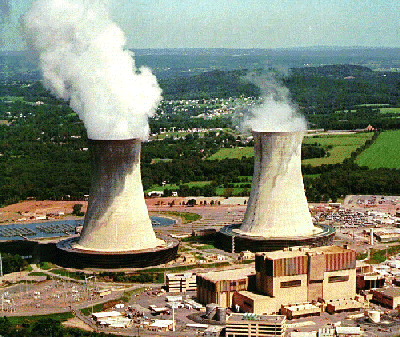
January 3, 2008
http://web.hermesemessenger2.com/tfg/public/Update_Links.asp?EmailAddress=&ScheduleID=725&IssueID=262&FileName=POWERnewshttp://web.hermesemessenger2.com/tfg/public/newsletters/present/ISSUE262/article689.html&ArticleID=689
In a step forward for Exelon Corp.’s plans to extend the operating life of the nation’s oldest commercial power reactor, a panel of Nuclear Regulatory Commission administrative law judges refused to hold up the relicensing of the Oyster Creek plant in New Jersey over concerns about corrosion of the aging facility’s steel shell.
Although one judge dissented on one point, the three-member Atomic Safety Licensing Board (ASLB) said Exelon’s plans to manage the problem gave “reasonable assurance” that the 636-MW boiling water reactor could operate safely for 20 more years.
Six antinuclear and environmental groups had asked the NRC not to proceed with the relicensing of the Lacey Township, N.J., reactor, whose license is set to expire in April 2009.
The groups argued that Exelon has not shown it can adequately test for and manage corrosion in the plant’s drywell, a steel shell that surrounds the reactor vessel. More broadly, they argue that Oyster Creek—which entered service in 1969—may have dangerous levels of wear and tear.
Most specific concerns about the plant’s relicensing, however, concern the drywell, which is designed to confine steam released during a serious accident and direct it to a suppression pool, where it cools and condenses into water. The concern is that potentially contaminated steam or water might leak out in the environment through corroded areas of the drywell.
Citing corrosion discovered in the drywell in the 1980s and early 1990s, NRC in 2006 asked Exelon to expand its sampling techniques for confirming the integrity of the drywell to include other steps to hinder possible degradation.
NRC staff cited those and other concerns in a draft safety report released during the review of Exelon’s license extension application. Among them were Exelon did not appear to have conducted any ultrasonic testing (UT) to check the thickness of steel walls in certain lower portions of the drywell, and it directed the company to expand its UT system to cover those areas. NRC also said it was concerned about the durability of an epoxy coating that the previous owner of Oyster Creek, General Public Utilities Corp., had applied to corroded regions of the drywell after scouring out the rust.
Exelon agreed to numerous remedial steps to meet NRC staff’s concerns, including ultrasonically testing the drywall every four years. Additionally, Exelon agreed to make a thorough inspection of the “sand bed region”—the portion of the drywell surrounded by sand—during a 2008 refueling outage.
But the antinuclear and environmental groups say Exelon’s plan is still inadequate. They petitioned the ASLB in 2005 to block Oyster Creek’s relicensing or to compel changes in Exelon’s management plan.
The groups’ two central complaints were that Exelon should be doing UT more frequently, and that the company’s corrosion inspection plans generally provided inadequate safety margins. The ASLB agreed to review those questions, while rejecting a variety of other challenges to Oyster Creek’s relicensing.
In its December 18 decision, however, the ASLB said that “AmerGen [an Exelon subsidiary] has demonstrated that the frequency of its planned UT measurements, in combination with the other elements of its aging management program, provides reasonable assurance that the sand bed region of the drywell shell will maintain the necessary safety margin during the period of extended operation.”
Although he agreed with the decision "in the main,” ASLB Judge Anthony Baratta raised a few concerns with it.
In a separate statement, Baratta pointed out that Exelon’s projections of future drywell performance rely on estimates, based on regression analysis and other methods, of the drywell’s current condition. Before projecting future rusting and overall drywell performance, Baratta said, new projections should be made based on more physical inspections or more conservative estimates about the drywell’s current condition.
“[T]here are large areas of the drywell in the sand bed region that do not have recent measurements or any measurements at all,” Baratta said.
More on Oyster Creek:
Exelon N.J. Oyster Creek reactor exits outrage
EDITORIAL: Battle to shut Oyster Creek has just begun
EDITORIAL:The Devil you know.Keeping Oyster Creek on line
Oyster Creek Trims Output to Valve Problem
Oyster Creek plant to stay at 92% power until April
Oyster Creek Generating Station clears last major hurdle in bid for 20-year license renewal


No comments:
Post a Comment